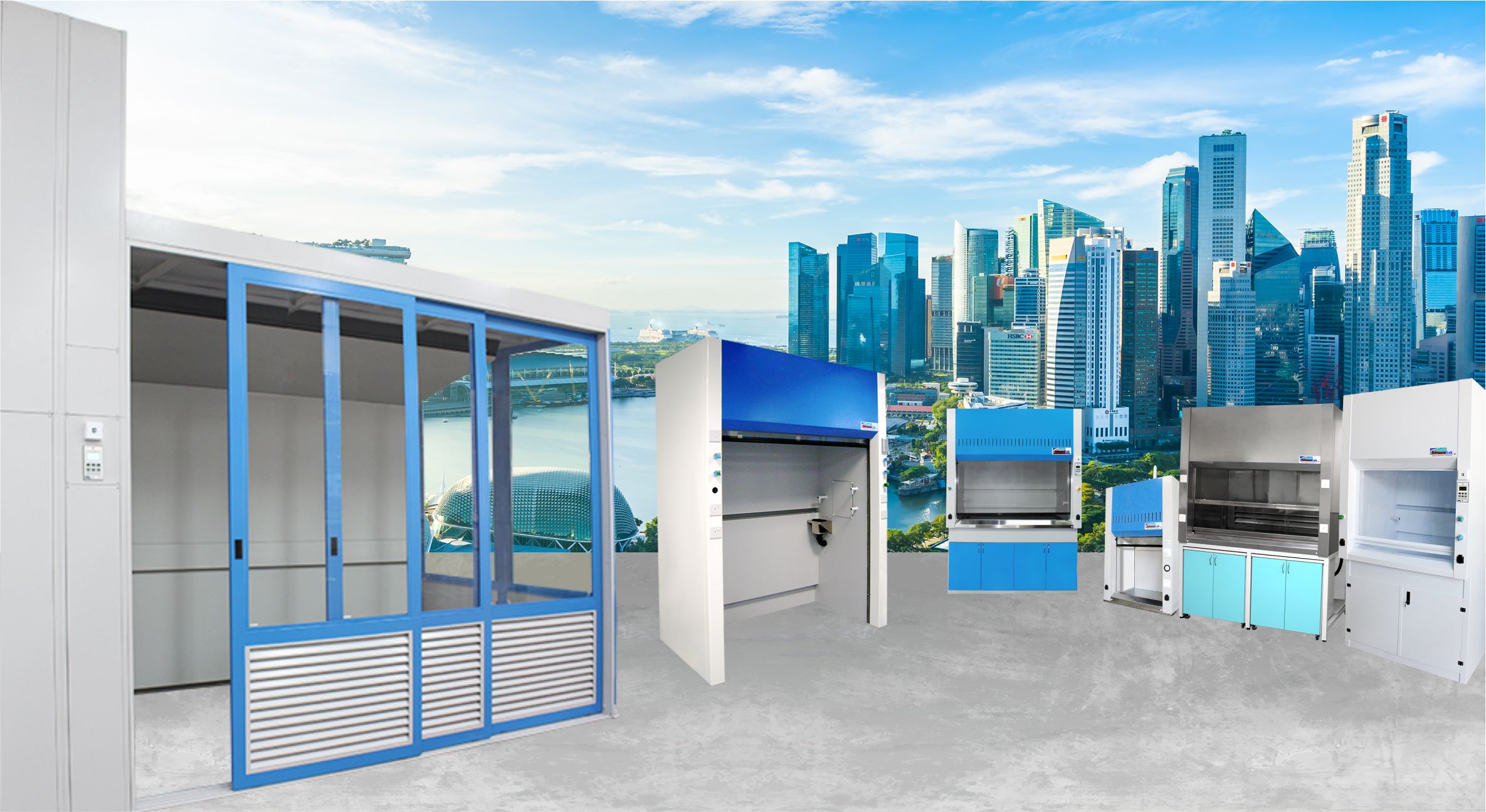Determining the Appropriate Fume Hood Type
Selecting the right fume hood for your laboratory is essential for maintaining safety and efficiency. Different types of fume hoods cater to various laboratory needs based on the chemicals used, ventilation requirements, and installation constraints. Here’s a guide to help you choose the most suitable option.
Ducted Fume Hoods
Ducted fume hoods are designed to vent hazardous fumes outside the building through an exhaust system. These hoods are ideal for laboratories that frequently handle large volumes of toxic chemicals. Their advantages include:
- Effective removal of hazardous vapors and gases.
- Continuous airflow to maintain a safe working environment.
- Customizable configurations to suit laboratory needs.
However, they require a fixed installation, which may involve significant costs for ductwork and ventilation systems.
Ductless Fume Hoods
Ductless fume hoods rely on built-in filtration systems to capture and neutralize chemical vapors before recirculating clean air back into the laboratory. These are best suited for laboratories with limited space or where flexibility is needed. Key benefits include:
- No need for complex ductwork, reducing installation costs.
- Portable design, allowing for easy relocation.
- Eco-friendly operation with energy-efficient filters.
Despite these advantages, ductless fume hoods require regular filter maintenance and may not be suitable for all chemical applications.
Walk-in Fume Hoods
Walk-in fume hoods are designed for handling large-scale experiments or oversized equipment. These hoods offer ample workspace and are often used in industrial research settings. Their main features include:
- Large interior space for accommodating bulky apparatus.
- High-capacity ventilation for enhanced safety.
- Versatility in handling diverse chemical processes.
Due to their size, walk-in fume hoods require substantial laboratory space and a robust ventilation system.
Bench-top Fume Hoods
Bench-top fume hoods are compact units placed on laboratory workbenches, making them ideal for general lab applications. They provide:
- A cost-effective solution for small-scale chemical handling.
- Easy integration into existing lab setups.
- Basic protection against hazardous fumes.
While they are convenient, bench-top hoods may not be suitable for high-volume or highly toxic chemical processes.
Consider Airflow Requirements
Proper airflow is critical to the effectiveness of a fume hood. One key factor is face velocity, which refers to the speed at which air enters the hood. A standard fume hood typically requires a face velocity of 80-120 feet per minute (fpm) to ensure optimal containment of hazardous fumes. Insufficient airflow can lead to exposure risks, while excessive airflow may cause turbulence and reduce efficiency.
Choosing the Right Fume Hood
When selecting a fume hood, consider factors such as:
- The types of chemicals used in your laboratory.
- Available space and installation feasibility.
- Ventilation system compatibility and cost.
- Compliance with safety regulations.
By assessing these aspects, you can determine the most appropriate fume hood to ensure a safe and efficient working environment in your laboratory.


